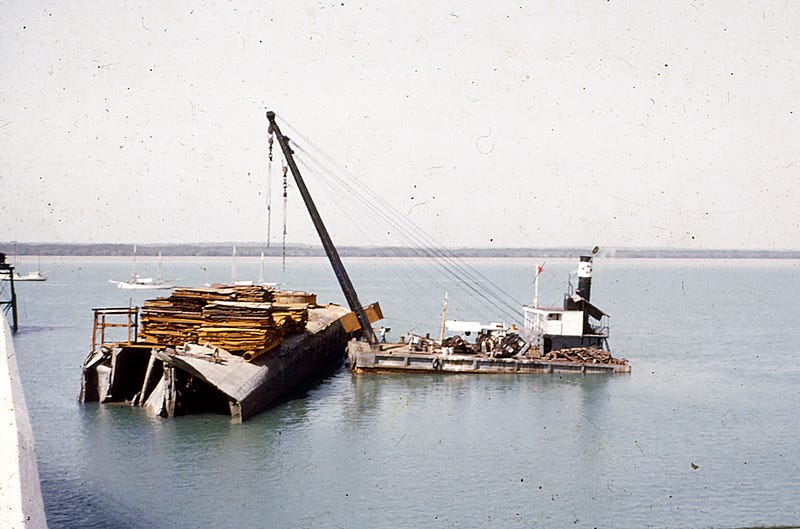# The Hidden Link Between Nuclear Weapons and Shipwreck Salvage
Written on
Chapter 1: Introduction to Nuclear Testing's Effects
In 1945, the detonation of the first nuclear bomb marked a pivotal moment in history, altering the global landscape in numerous ways. As onlookers witnessed the iconic mushroom cloud rising over the New Mexico desert, they could only speculate on the profound transformations to come. While the focus of scientists and politicians was primarily on major issues like nuclear warfare and shifts in international relations, few anticipated the subtle yet significant consequences that would unfold over time. One of these unforeseen impacts was the contamination of our planet due to ongoing nuclear testing.
The 1950s saw a surge in nuclear tests, as various nations sought to demonstrate their capabilities. This led to an increase in background radiation levels, which became detectable above the natural baseline. The radiation infiltrated the soil and various metals, including steel, causing unexpected complications. Engineers found that newly manufactured steel contained traces of this radiation, making it less suitable for sensitive applications.
The video "Why Steel from Before 1945 is Weirdly Expensive" delves into the reasons behind the unusual value of pre-war steel, shedding light on its significance in the context of nuclear contamination.
Section 1.1: The Value of Low-Background Steel
Today, the only sources of uncontaminated steel, known as low-background or pre-war steel, are predominantly found on the ocean floors. This steel was forged prior to the atomic tests, preserving its purity and making it highly sought after. As a result, there has been a surge in illegal salvage operations targeting shipwrecks to retrieve this valuable material.

Section 1.2: The Ethical Dilemma of Salvaging War Graves
Many shipwrecks targeted in these salvage efforts are designated as war graves, containing the remains of soldiers from World War II. Nations such as the United Kingdom, the United States, and Japan are concerned about the ethical implications of these operations. The wrecks in locations like the Java Sea and the South China Sea are not only historical relics but also final resting places for countless individuals.
Despite the potential for legal ramifications, illegal salvage crews have increasingly ventured into international waters, often disguising their activities as legitimate salvage operations or fishing expeditions. Once retrieved, the steel is cut into smaller pieces and transported to markets, primarily in Southeast Asia, where it is sold illegally.
Chapter 2: The Market Dynamics of Military Steel
The video "The Bizarre Market for Old Battleship Steel" examines the unique market dynamics surrounding pre-war steel and how it drives illegal salvage operations.
Section 2.1: Understanding the Appeal of Military Wrecks
Experts suggest that military wrecks are often targeted not just for their low-background steel but also because they typically contain higher quality materials than commercial vessels. Military-grade steel is often thicker and of superior quality, which adds to its desirability.
Positive Developments: A Return to Normalcy
On a more optimistic note, background radiation levels peaked in 1963 and have since decreased significantly. Consequently, steel produced today is generally much less contaminated than that produced during the nuclear testing era. However, some modern steel still contains traces of radiation that render it unsuitable for specialized applications like Geiger counters or spacecraft instruments.
Section 2.2: The Future of Steel Quality
As long as nuclear testing remains dormant, the quality of modern steel is expected to surpass that of pre-war steel over time. This could diminish the allure of salvaging military wrecks, redirecting attention elsewhere.
Conclusion: Lasting Impacts of Nuclear Testing
The relationship between nuclear testing, steel quality, and illegal salvage operations serves as a cautionary tale of the long-term consequences of nuclear weapons. The pollution caused by nuclear testing extends far beyond immediate impacts, affecting various sectors, including the steel industry. As illegal salvagers continue to target WWII wrecks for valuable scrap, growing awareness of the issue may lead to more stringent measures against these operations in the future.
